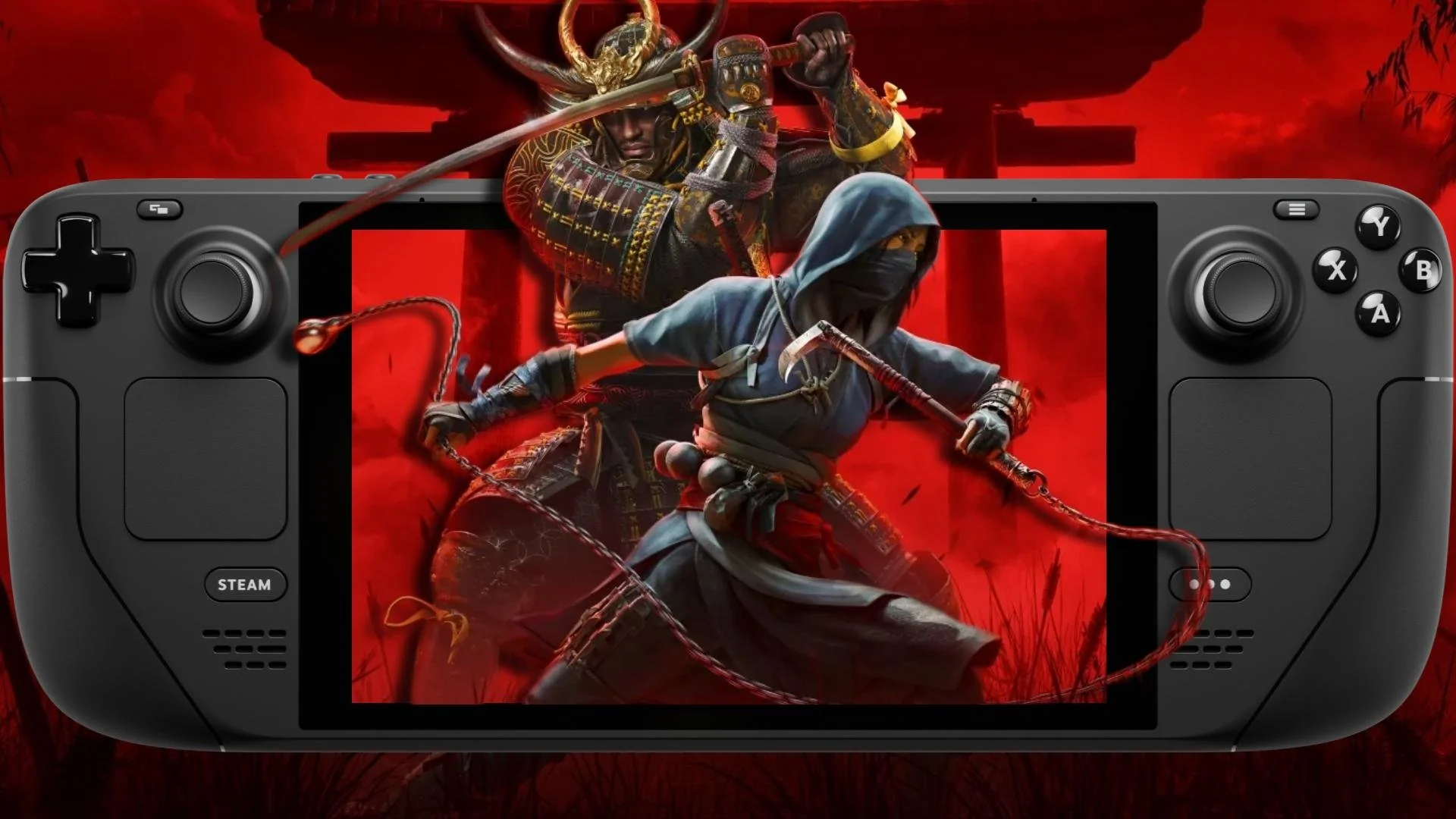Initial reactions to Ubisoft’s announcement that Assassin’s Creed Shadows would be Steam Deck verified were met with skepticism. Based on past experience, even games officially marked as “verified” sometimes fail to perform well on Valve’s handheld device. High expectations were rarely met, especially when it came to graphically demanding AAA titles. With Assassin’s Creed Shadows being a visually intense release designed for modern consoles, doubts about its playability on the Steam Deck were reasonable.
The idea of running such a heavy-hitting title on a handheld seemed nearly absurd. Concerns about graphical fidelity, frame rate stability, and user experience were immediate. However, these fears were quickly dispelled upon actually testing the game. Ubisoft appears to have dedicated effort toward optimizing the experience, and while it’s not without issues, the game delivers a commendable performance on the Steam Deck—one that goes beyond what many expected.
Performance and Visuals: A Pleasant Surprise
Although the Steam Deck does face moments of struggle, the gameplay remains surprisingly smooth. Key characters like Naoe and Yasuke retain their console-quality appearances, and the open world maintains its immersive design. Frame rates hover consistently around 30 FPS even in combat, which is impressive for a portable experience. The game still showcases sweeping vistas and dynamic environmental effects, making it a faithful rendition of the full-scale version.
This performance was tested on a 512GB LCD model of the Steam Deck. Players using the newer OLED version might see slightly improved results due to the upgraded screen and better contrast ratios.

Pre-Optimized Settings Make It Easy to Jump In
One of the biggest advantages Assassin’s Creed Shadows offers on the Steam Deck is its level of optimization. Unlike many games that launch with default low settings requiring user adjustments, this title comes preloaded with settings tailored to the device. Most options are locked down, reducing the need for fine-tuning. This approach mirrors console gaming, where users aren’t expected to tweak individual graphics settings.
There are some editable options, such as field of view and screen aspect ratio. Reducing the field of view can provide a minor performance boost without negatively affecting gameplay. The game also supports the Steam Deck’s 16:10 resolution but switching to 16:9 could offer a few extra frames—though at the cost of visual immersion. On OLED models, maintaining the full screen aspect is especially rewarding.
The Case for Frame Generation
Frame Generation is another notable feature. Enabling it can increase frame rates by up to 20 FPS, albeit by generating synthetic frames. While this can introduce slight visual artifacts—particularly in cutscenes—the added fluidity is noticeable. The trade-off is a fluctuating frame rate rather than a steady 30 FPS, so players should test both options to determine personal preference.
Where the Game Falls Short
Despite the overall strong performance, Assassin’s Creed Shadows makes some noticeable concessions. Loading into the Animus menu can cause severe stuttering, and logging back into Ubisoft Connect may be necessary after switching devices—though that’s more of a software inconvenience than a hardware limitation.
Cutscenes are the biggest performance weak spot. Frame rates can dip to around 20 FPS during these sequences, making them choppier than the gameplay. Fortunately, audio stays in sync and visual quality remains largely intact. These moments fall short of what one might expect from a console, but they don’t significantly impact gameplay itself.
During active gameplay, however, performance returns to a solid and consistent state. Whether engaging in large-scale battles or stealth missions, frame rates rarely drop below the expected 30 FPS. Frame Generation can push this to around 40 FPS, with occasional highs of 50 FPS. While crowded scenes can make aiming and reading enemy cues more difficult, these are minor inconveniences rather than deal-breakers.

Visual Fidelity Holds Up Well
Even with graphical compromises, Assassin’s Creed Shadows maintains a strong visual identity. Environmental details, character designs, and customization elements are all preserved to a surprising degree. The only noticeable dip in visual quality occurs when dynamic resolution lowers detail in densely populated areas, making distant enemies look fuzzy. Otherwise, the game looks crisp and clean, resembling other scaled-down console ports like The Witcher 3 on the Nintendo Switch.
Is the Steam Deck a Viable Platform for Assassin’s Creed Shadows?
There’s no denying that Assassin’s Creed Shadows was built with more powerful systems in mind. Console or PC players will enjoy richer detail and smoother cutscenes. Docking the Steam Deck won’t solve its performance limitations either, as the hardware is already maxed out in handheld mode.
Still, for those curious about using the Steam Deck as a primary platform for the game, the experience is more than serviceable. The text and UI are well-suited to the screen, gameplay sessions feel natural on the go, and cloud saves allow for seamless switching between devices. This makes the Steam Deck a strong secondary device or even a main platform for casual sessions, especially for players who value convenience and mobility.
Final Thoughts
Initially, neither Ubisoft nor players seemed confident in the possibility of Assassin’s Creed Shadows running well on the Steam Deck. However, the final result has turned heads. Despite some cutscene lag and reduced visual fidelity, the core gameplay is engaging and smooth. For those embarking on the game’s lengthy campaign, the Steam Deck version proves to be an unexpectedly enjoyable way to experience the adventure on the go.
